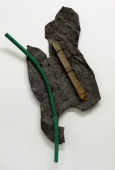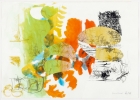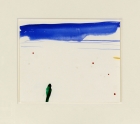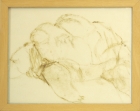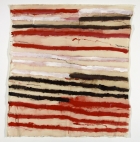Chicago Photographic Salon of 1900
April 3 to 18, 1900. The Art Institute of Chicago
Held under the joint management of 'The Chicago Society of Amateur Photographers' and The Art Institute of Chicago.
A FOREWORD
This exhibition is designed to demonstrate the artistic possibilities of photography as a means of giving expression to the individual appreciation of and feeling for that which is pictorially beautiful.
It is the result of an agitation in this direction awakened in the world of photography by a small circle of men, who, having beheld drowsing in the frozen clasp of science the beautiful spirit of art, strove to awaken it from its icy slumber to add new beauty to the world.
These men, by their pictorial productions and ceaseless teachings and exhortations, finally established a definite pictorial movement. This movement has met with Opposition here and abroad from within and without the photographic world.
The opposition was traceable to the allied forces of ignorance, self-interest, prejudice and misunderstanding.
For example, among those who used photography, the makers of portraits chiefly, there was a large element quite innocent of any knowledge of the meaning of the term "composition" as applied to picture making, to whom the word "tonality " conveyed as much meaning as an Aztec hieroglyph, and who were as devoid of any feeling for the artistic as it is possible for a human being to be. This element, with an instinct that was born of self-preservation, combatted this movement with unrelenting bitterness; for though few of them appreciated its real significance, it was for this class, as the writing upon the wall that presaged approaching doom. The success of the movement meant the education of the public taste, and the consequent refusal of the public longer to accept the inartistic wares of this class of workers. The less liberal and more dogmatic of the painters also ranged themselves with the opposition. They saw in photography a purely mechanical process of which the photographer was simply a part of the mechanism ; and when from time to time they were forced to admit the positive artistic merit of certain photographs, they would, with a naive disregard for logical consequences, observe that the person who made the picture: under consideration had a positive genius for doing work in charcoal, india-ink or paint ; forgetting all the while that this attitude was an admission of a distinct individuality in the work that they had already pronounced mechanical, and consequently a positive contradiction of their original position.
The artist, they held, must select the best from nature, compose it into such a picture as his taste and imagination may dictate, and present it through the medium of his own send of color and line; passive nature, immobile and insensate, presents many incidental facts, all of which are interesting, each of which may be suggestive of the beautiful, and every one of which will excite some sort of interest or appreciation; but which, presented literally and collectively just as they appear in nature, will not compose into a picture, nature requiring for this purpose the co-operation of the imaginative mind of man.
Photography, being in their opinion, purely mechanical and quite devoid of any power of selection, and the photographer part of the mechanism, it was not possible for a photograph to be truly artistic because it was simply a mechanically exact copy of nature.
To admit after this that any photograph from nature possesses distinct artistic merit and charm, was to admit that it differed in character from other photographs, and also that it did not interpret nature literally. To admit this is to admit the existence somewhere of a power of selection and composition, and this involves a denial of the proposition that photography is a purely mechanical medium. Such a denial compels the admission that it is a more or less pliant tool in the hands of the photographic worker; and such admission leads to the irresistible conclusion that photography is entitled to an honorable place among the graphic arts.
There are many among the purely technical and scientific workers who likewise oppose the movement because they quite misunderstand its purpose, and entertain a fear that its main object is to discount and discredit all that is simply technical or scientific. Such is not the case. Technical and scientific photography have their distinct place and ever will have. Artistic pictorial photography has its place also, and hence the success of this movement despite all Opposition.
The joint exhibitions broke the ground for it in this country and the Philadelphia Salon of 1898 — the first photographic salon properly so called ever held in America, established the justness of its claim beyond dispute.
Chicago has the honor of being the second American City to recognize the soundness of this claim.
Prompted by no petty spirit of rivalry but impelled by an almost intuitive perception of the broad significance of this movement, she has thrown herself into it with all the splendid vigor and determination that have characterized all of her other undertakings and won for her an honorable place among the great cities of the modern world.
Profiting by the experiences, efforts and friendly advice of Philadelphia and influenced by the single idea of placing upon the walls of The Art Institute of Chicago, an exhibition of American pictures entirely worthy to be hung thereupon, by reason of its high standard of artistic excellence, the broad-minded joint committee of The Art Institute of Chicago, and The Chicago Society of Amateur Photographers has given to the art loving public of Chicago, the choicest collection of artistic photographs ever shown in America, and proves if proof were wanting, the right of the photographic society to a home in that splendid home and treasure house of art, The Art Institute of Chicago.
Joseph T. Keiley
New York, March 29, 1900.
Source: Catalog of this exhibition.
artist-info.com Exhibition Page
https://www.artist-info.com/exhibition/The-Art-Institute-of-Chicago-Id380304

 Exhibition Announcements
Exhibition Announcements 














